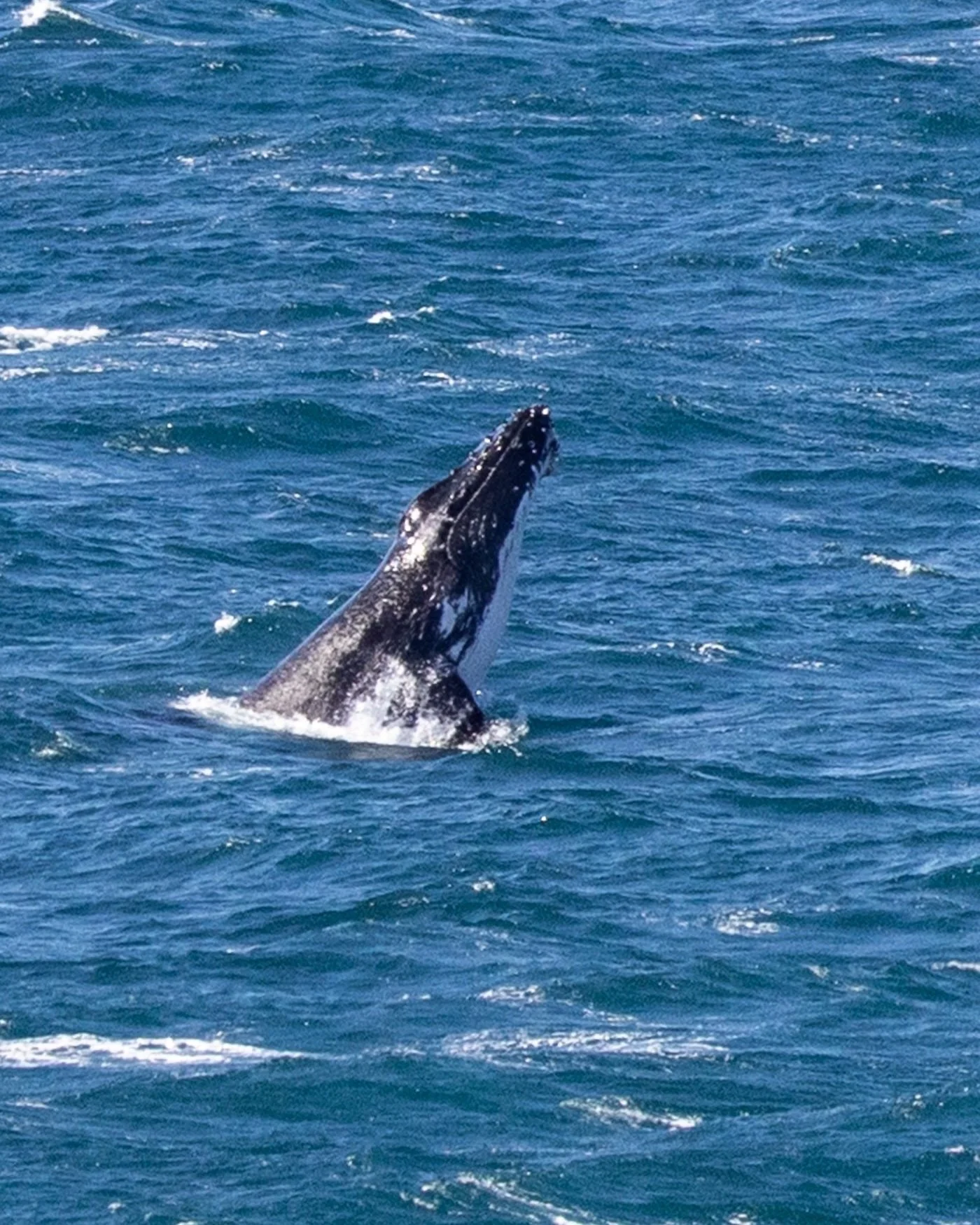Cape Byron Lighthouse Walk
The Walgun Cape Byron walking track is a spectacular 3.7-kilometer loop trail that showcases Byron Bay's natural beauty. The headland and iconic Cape Byron Lighthouse mark the easternmost point of mainland Australia with 360 degree views of the spectacular surrounds.
-
This popular coastal trail features beaches, rainforest and stunning clifftop views of the ocean and surrounds.
Distance 3.7 km Time 2 hours
Level of Difficulty Moderate -
Spectacular ocean views
Several beaches
Whale watching and wildlife spotting
Native flora and seasonal wildflowers
Lighthouse, Visitors Centre and tours
-
Go early to avoid the crowds (especially on weekends and school holidays)
To see whales, June-September are best
Street parking near the start of the trail is free but check times
Swimmers, sunscreen and hat recommended
Pack your camera and or binoculars
Allow time to just sit and watch the view, or the whales
Theres a cafe at The Pass and another near the Lighthouse Information Centre
Getting there
You can start this loop track at any point and walk in either direction. I started at the Captain Cook Lookout Car Park. From Byron Bay town centre, follow Lawson Street east until it becomes Lighthouse Road, then continue to the Captain Cook car park. This and other car parks are metered but there is free timed parking in nearby streets.
Best time to go
The track is great year-round, but seasons do makes a difference. Autumn (March-May) offers ideal walking weather, while winter (June-August) is best for whale watching. Spring (September-November) is starting to warm up but it’s a good season for wildlife spotting and milder than the summer months which can get very hot.
Early morning is ideal for seeing wildlife and avoiding crowds, and if you go early enough you can watch the sunrise from Australia's easternmost point. Late afternoon is great for sunset pics, while midday can be hot and crowded.
The Trail
This track has undergone significant changes since I last walked here twenty-,something years ago, and though its busier and the surrounding area is significantly more developed, the trail is certainly much improved.
The 3.7km loop leads you first along a coastal path which switches between stretches of sandy beach and clifftops with dramatic ocean views, before the final ascent to the lighthouse.
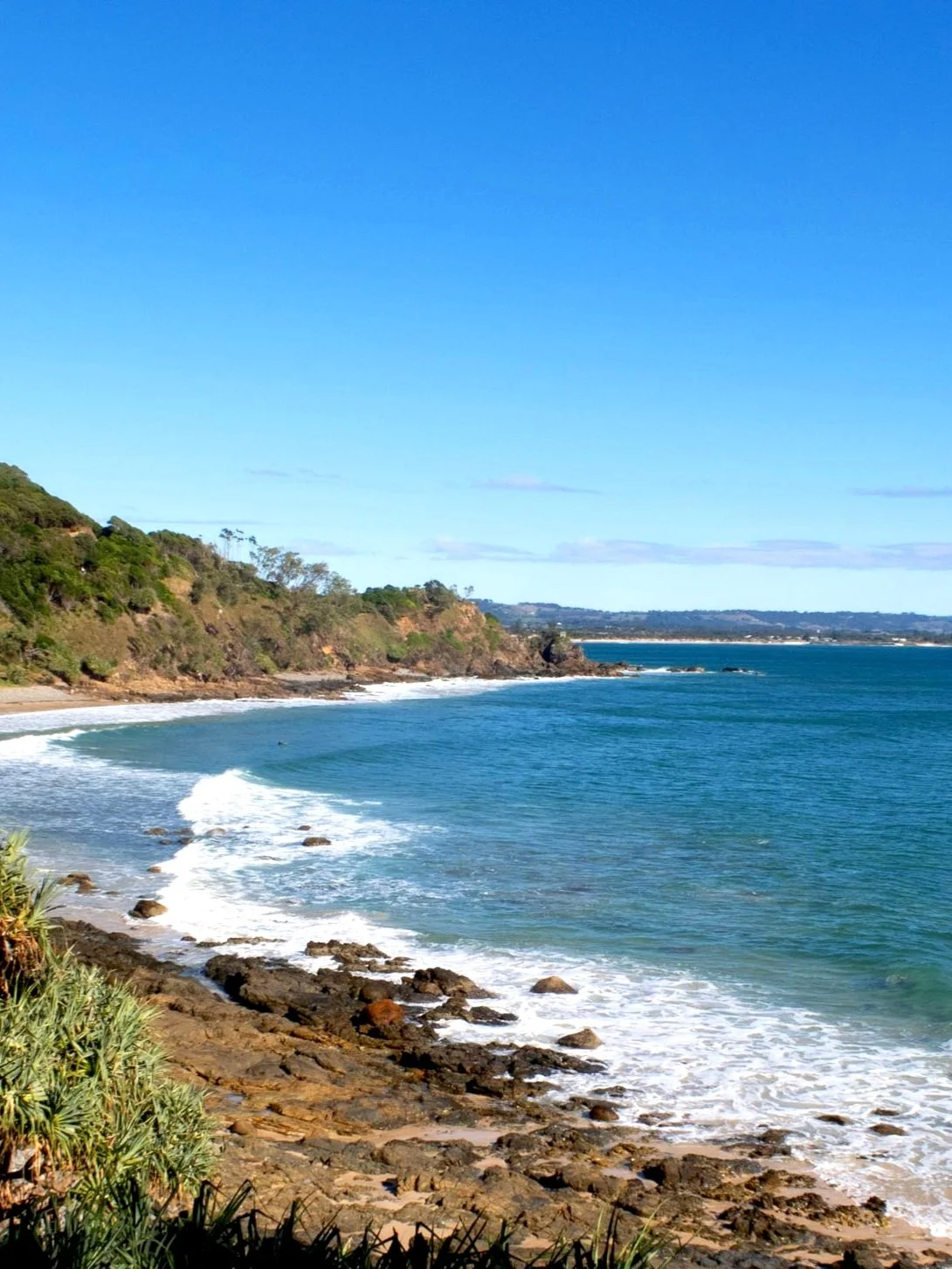
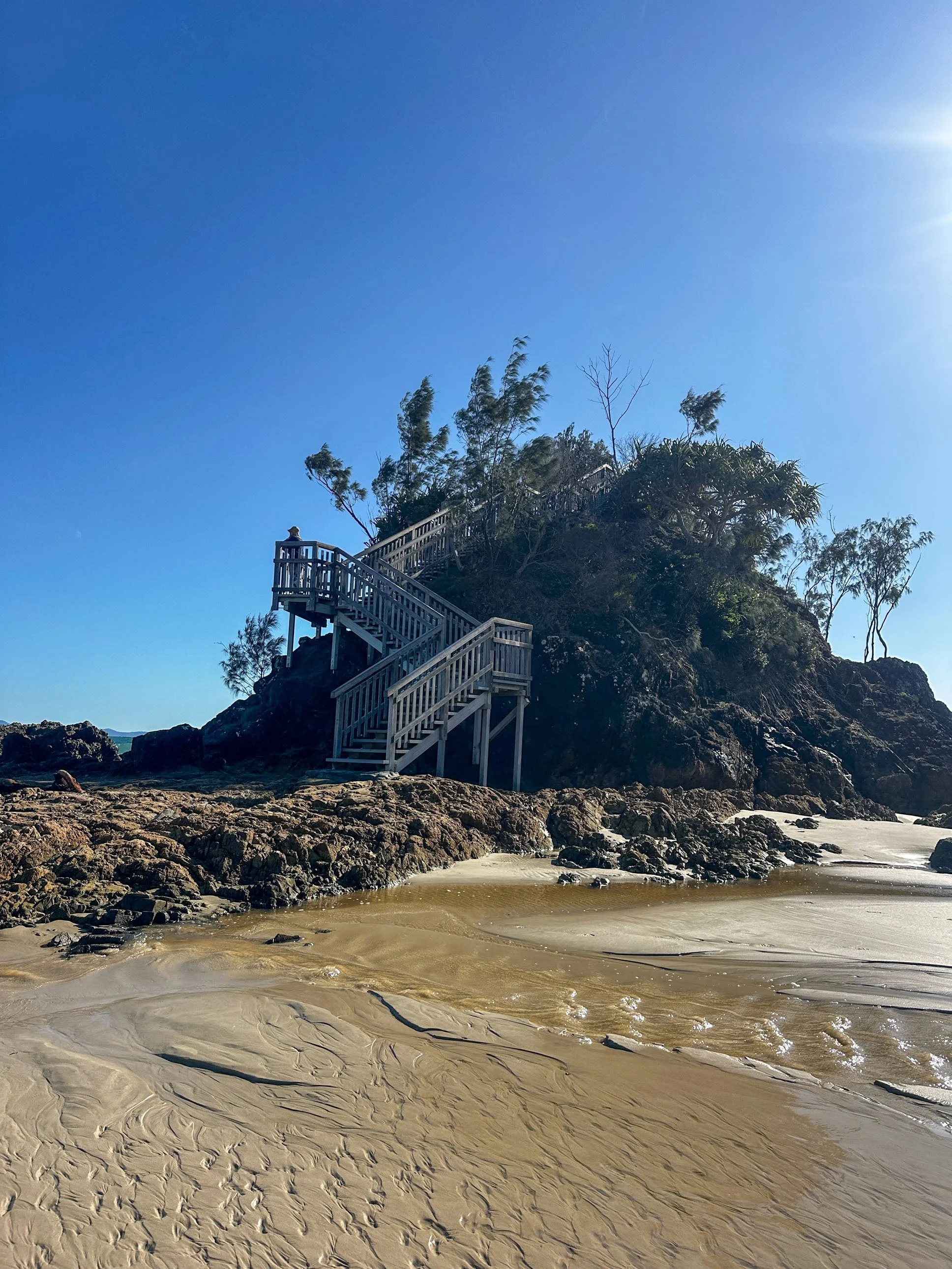
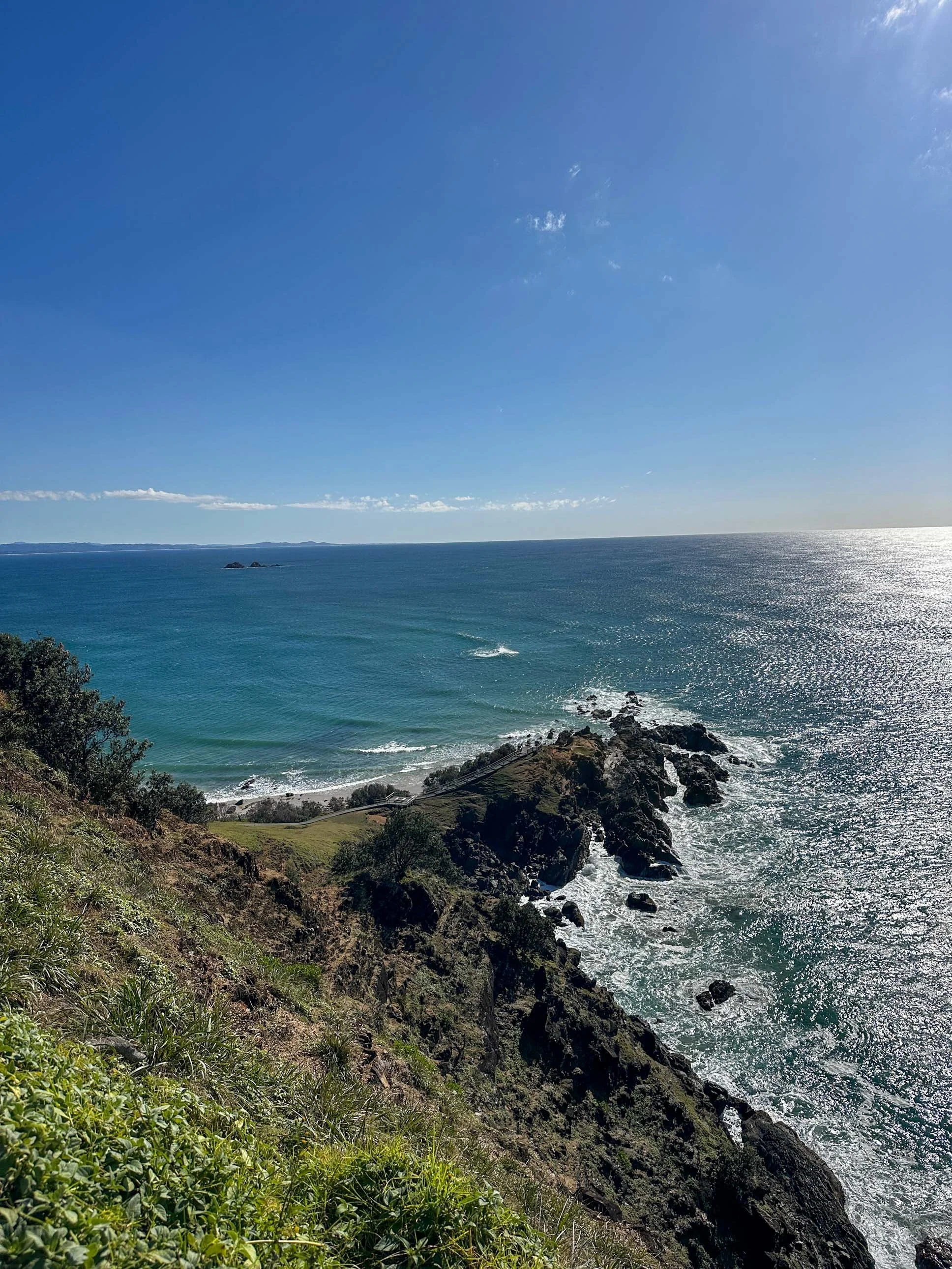
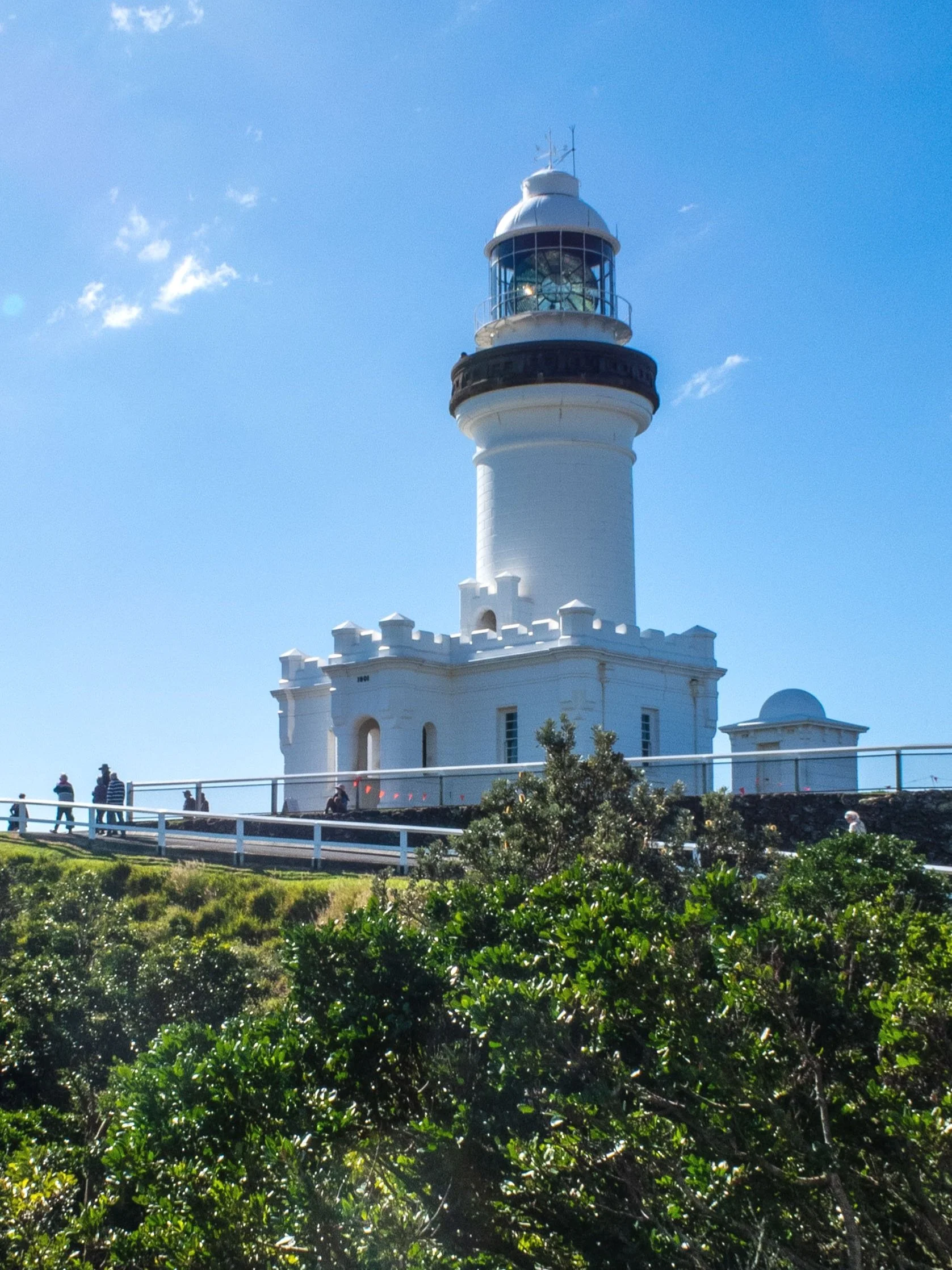

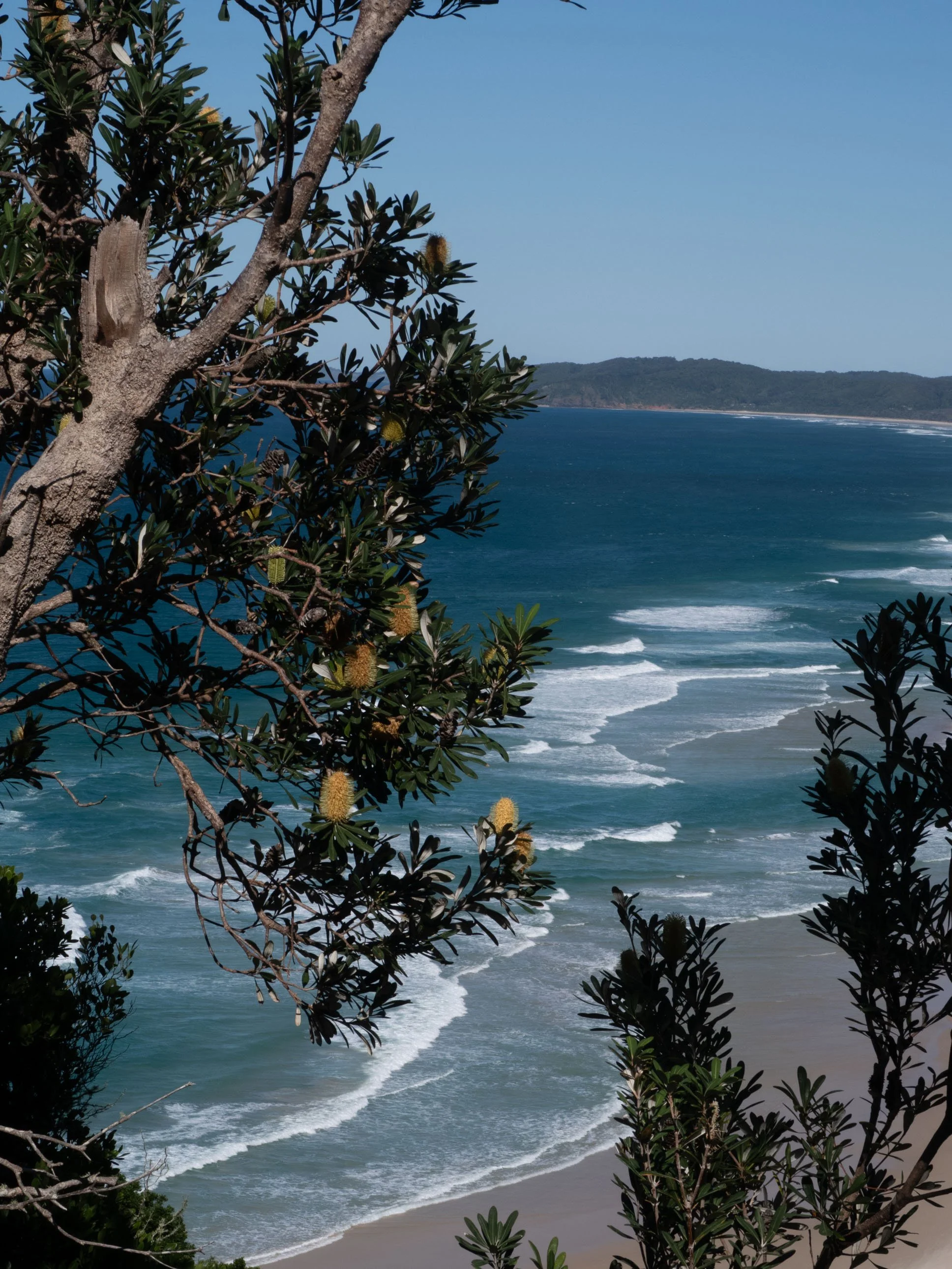
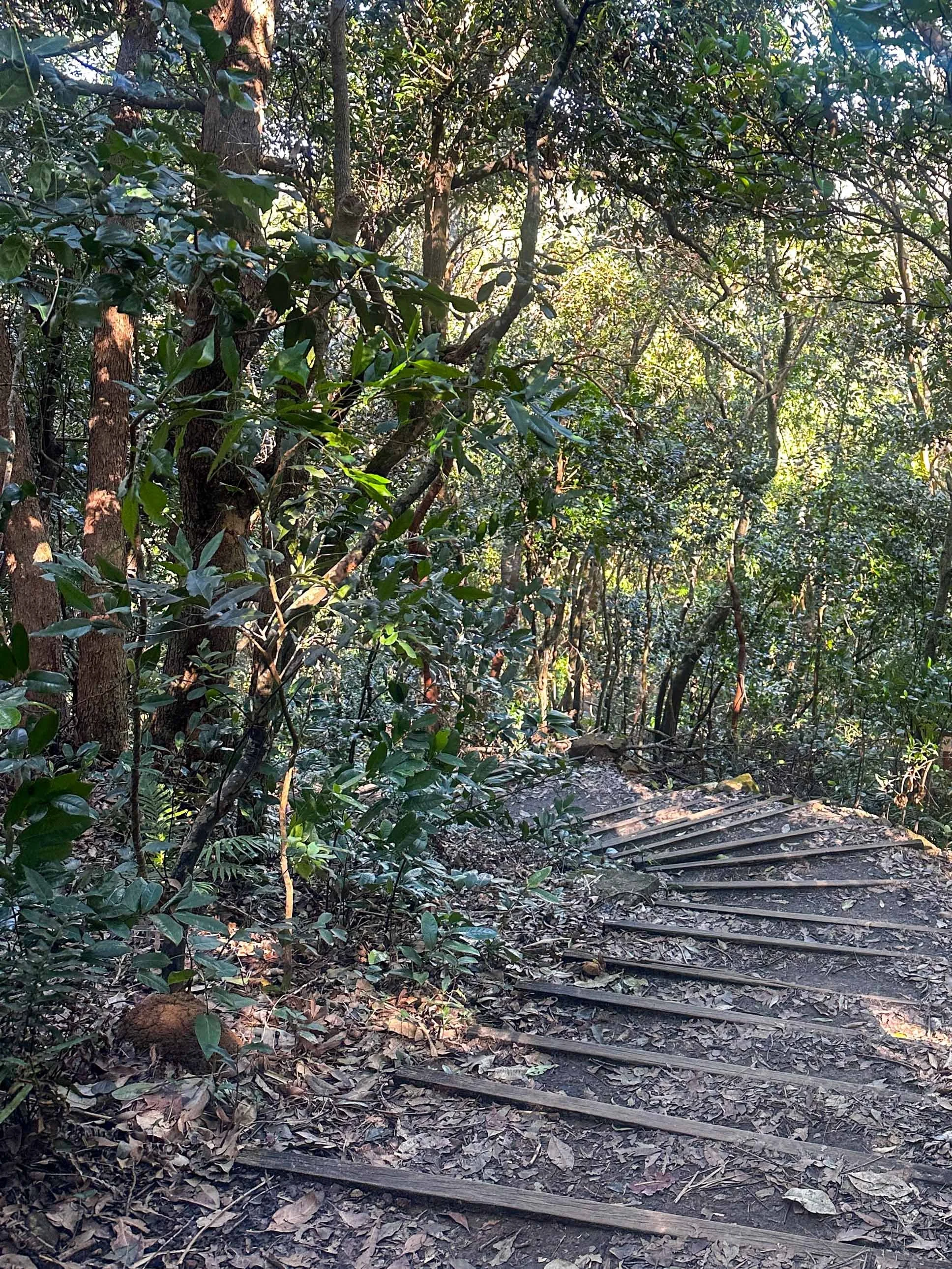
The return section takes you through shaded rainforest beneath bangalow palms and ancient cycads. You’ll want to watch your footing as you descend through the shaded forest. The steps here are steep especially for those of us with shorter legs, and the area can get quite muddy after rain. Watch out for locals who like to run up and down these steps for fun!
This return section offers a contrast worth exploring but if you’d prefer to have a more open coastal view just return from the lighthouse the way you came.
The track is rated moderate and is suitable for most fitness levels, but it does include some steep sections and many steps, especially through the rainforest section. Allow at least two hours to complete the walk but you’ll really need more to fully take in the views and surrounds.
Leave the dog at home.
Highlights
From the base of Cape Byron Lighthouse the views are some of the best you’ll get on the North Coast. The 22 metre-high lighthouse was constructed in 1901 and marks Australia's easternmost point. The light is now automated but it was operated by resident keepers until 1989.
Guided tours of the lighthouse are on offer and you can learn all about it and local maritime history in the Information Centre below it. There’s a kiosk here also for coffee and light meals that can be enjoyed looking out at the ocean vista.
The trail connects multiple beaches, each offering unique outlooks with dramatic natural backdrops, and a range of swim and surfing conditions. The Pass for example is renowned for its long, right-hand waves, ideal for longboarders and experienced surfers, while Wategos has gentler, rolling waves which are great for beginners.
Cultural Significance: The area holds historical, spiritual and cultural importance for the Bundjalung people, who know the place as Walgun. Look out for the various signboards along the track to learn more about Walgun’s history including the discovery of the pipi midden at The Pass.
Wildlife
The air, land and sea of Walgun Cape Byron are alive with wild creatures, local and migratory.
On the land, keep an eye out for wallabies in the early morning and if you’re very lucky you might even see a koala, though their numbers here have declined somewhat in recent years.
In the air, you’ll likely spot one of the many bird species that live locally or migrate along the coast. Sea Eagles and Brahminy Kites are often seen hovering above the headland while Fairywrens, Honeyeaters, Wattlebirds and others scrabble among the scrub. eBird lists 168 species in the Cape Byron State Conservation Area so this is a great spot for birders.
And if you have brought your binoculars or even if you haven’t, the stars of the show up here would have to be the Humpback whales that can be readily spotted from the higher vantage points during the winter months (June-September, no promises though ;). I was there in July and saw heaps! They were breaching, blowing, tail flapping and generally putting on a show for the crowd above.
I also saw plenty of dolphins too, three pods in all at different points along the trail and others saw turtles and a large group of stingrays.
In the Area
There are so many things to see and do within the immediate vicinity of Byron Bay or just a short drive away. Below are just a few suggestions
Local markets are popular and plentiful. The Byron Farmers Market is held every Thursday at Butler Street Reserve. Bangalow, Lismore and Mullimbimby also host weekly farmers markets and various other markets featuring local artists and artisans are held monthly across the region.
Watersports are a feature of the area, obviously, and snorkel, surf and kayak classes and tours are offered by a number of local providers.
One thing I wanted to do but didn’t have time for was to take a snorkel tour out to Julian Rocks. The aquatic reserve here is renowned for its marine life and is popular with snorkelers and divers. Next time.
Julian Rocks, a favourite spot for snorkelers and divers
Some of the nearby towns are certainly worth visiting and they are generally less busy and the accommodation less expensive than Byron Bay. We’ve stayed In Lennox Head a couple of times. It’s much smaller than Byron and certainly has a more relaxed feel. A great walk to do here is the boardwalk from town to Pat Morton lookout which is a another excellent whale watching spot.
Another nearby town I really like is Banaglow. It’s about fifteen minutes in from the coast and has the feel of a country town. There are some great local shops and cafes in Bangalow and the historic showground behind the main drag hosts the popular monthly markets (every 4th Sunday of the month), as well as various cultural events, food and writers’ festivals included.




